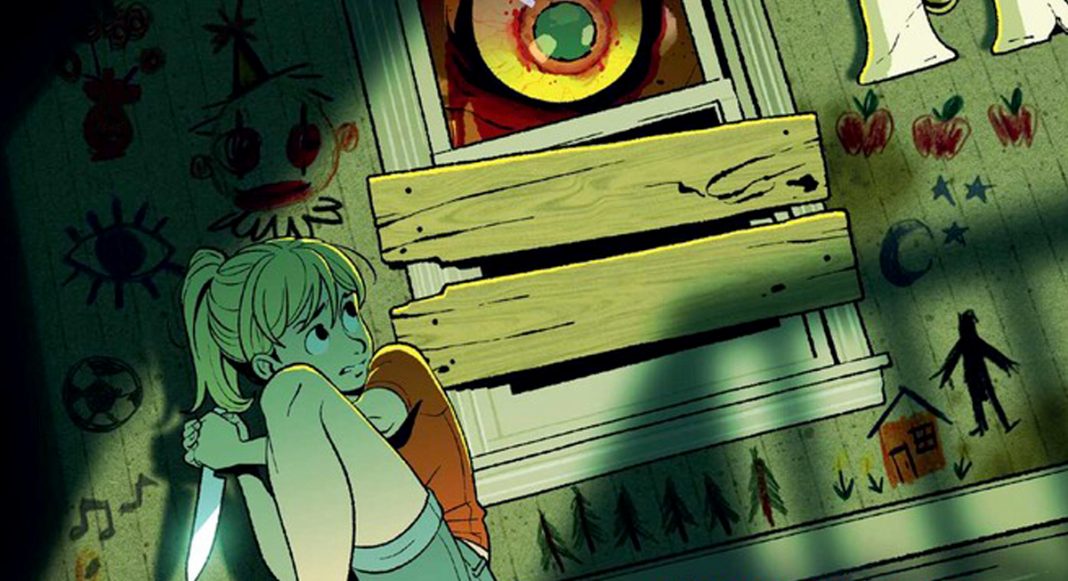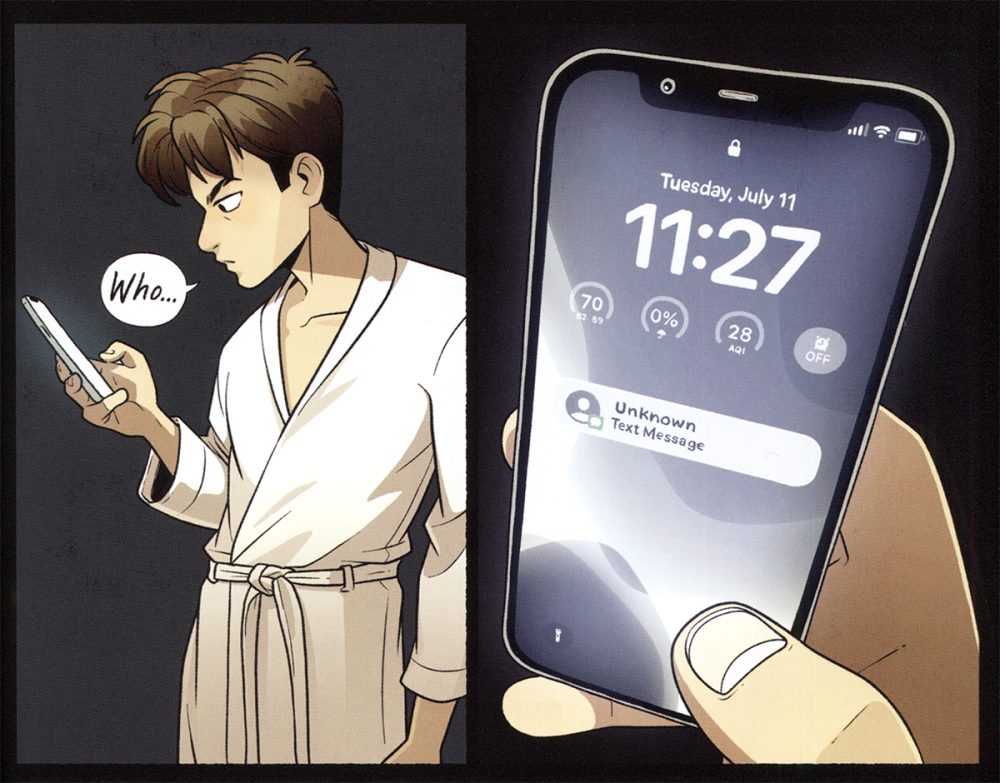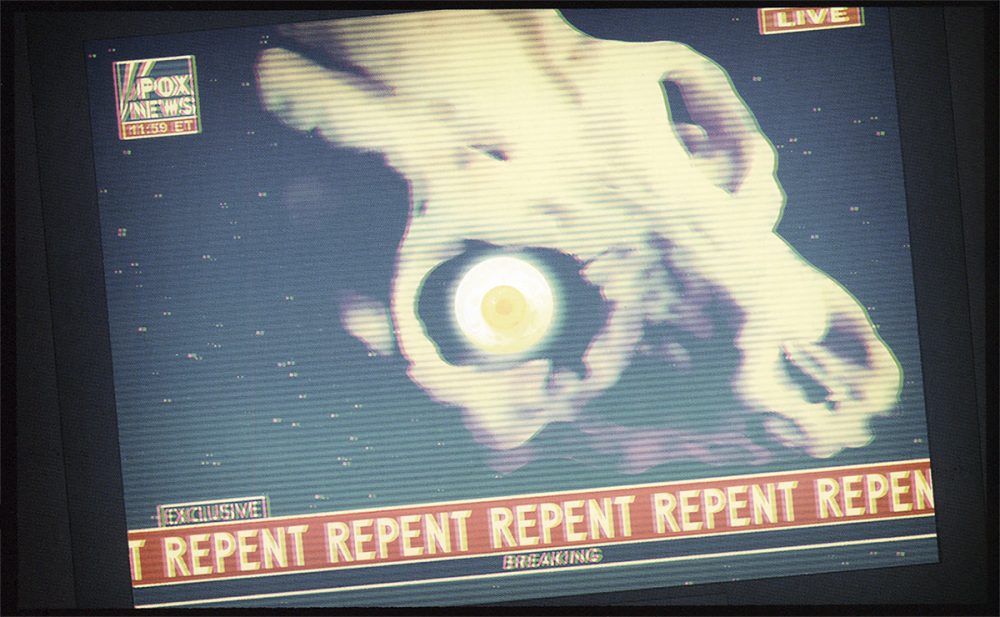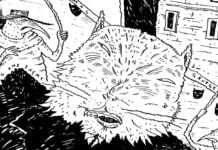 Let Me in Your Window
Let Me in Your Window
Cartoonist: Adam Ellis
Publisher: Simon & Schuster
Publication Date: September 2025
Digital horror is the natural evolution of analog horror, a genre that has exploded in popularity since the early 2020s. While analog horror explores the shadows of our memories of twentieth-century technologies, digital horror plays in the liminal spaces of twenty-first century internet culture. Just as our ancestors saw monsters in depths of a moonlit forest, we now tell stories about the mysterious and horrible things we’ve seen online. The internet is not unlike the infamous Navidson House in House of Leaves – it may seem wholesome on the surface, but it only becomes bigger and stranger the deeper you go.
Adam Ellis’s second horror comic collection, Let Me in Your Window, is digital horror at its finest. As the successor to Ellis’s 2024 collection Bad Dreams in the Night, Let Me in Your Window ventures even deeper into the wires as it speaks to anxieties surrounding the omnipresent ghosts that speak to us through our screens. Even if most of us are content to allow these phantoms to pass unnoticed, it can be unnerving to realize that we’re ghosts as well – ghosts being watched, ghosts being catalogued, and ghosts that constantly leave behind traces of our former selves. The ten stories collected in Let Me in Your Window invite the reader to reflect on what it means to inhabit the constantly unfolding urban legends of online culture.
In “Hello Charlie,” a guest at a hotel notices that someone is adding songs to his Spotify playlist via the local wi-fi network. He has a playful conversation with the stranger in the form of song titles, but what starts as a harmless flirtation quickly becomes creepy and possibly even dangerous. The idea of having a stalker is unpleasant to begin with, but a digital stalker is somehow even worse. No matter how many miles you might travel in the real world, your digital stalker will always be online and waiting for you to log back in.
In one of the longer stories in the collection, “Old Machines,” a man is contacted by the ghost of his dead sister on AOL Instant Messenger. She assures him that this isn’t a prank or a glitch. Rather, she’s trapped in a type of purgatory, and old technology is the only way she can communicate. She warns her brother that some of the people trapped with her are figuring out how to use newer technology to return to the world of the living.
Perhaps the person writing these messages is indeed the spirit of a human being, but there are other possibilities. After we pour so much of our own souls into machines, what happens to these traces of ourselves when technology becomes obsolete? And what might happen when technology becomes advanced enough for these ghosts of our former selves to return?
“Old Machines” isn’t explicitly about AI or LLMs, and this uncanny absence of a clear referent is to its credit. The story draws its horror precisely from its sense of uncertainty. We can never truly know what voices are speaking from the other side of the screen, nor do we yet understand how unknown voices may become louder and more prevalent in the rapidly approaching future.
“Gospel of the Dead Moon” entertains chilling speculation about the reality-bending uncertainty implicit in post-pandemic online spaces. When an unidentified projectile hits the moon, the government refuses to comment. Two people in a small town in coastal Maine watch chaos unfold on their screens as competing maelstroms of rumors swirl online. Though urban social collapse doesn’t impact their lives more than rural depopulation already has, the two are still plagued by a sense of impending dread. Ranting extremists begin to take over the broadcasts, and they seem unhinged – but what if they’re actually right this time? This story is a fantastic piece of awe-inspiring cosmic horror, but it’s difficult to read without feeling the same tinge of dread as the protagonists in the wake of a decade of virulent online conspiracy theories.
“Sunken Express” approaches a similar theme from a different direction. In this story, an aging Millennial meets his younger self on a time-traveling subway train rumored to run through the abandoned tunnels under New York. The adult wants to return to a time before the internet, but his child self desperately wishes to move forward to a time when he can be openly gay with consequences. Ellis reminds the reader that, as anxiety-inducing as the present may be, it’s important to remember to be kind to the ghosts of the past.
Despite the spookiness (and occasional goriness) of his stories, Ellis’s characters are attractively drawn and compellingly animated. The mature yet cartoon-inspired art style adds a touch of visual nostalgia to stories that will resonate strongly with adult readers who grew up along with the internet. Elena Kononenko’s eerie background art in the opening story sets a suitably oppressive tone and contributes a tinge of the timeless and otherworldly to a collection set firmly in the present cultural moment.
From underground urban legends to cursed YouTube channels, Let Me in Your Window embarks on a thought-provoking exploration of the haunted spaces of digital culture. Building on the analog horror boom of the early 2020s, Adam Ellis invites speculation on the ghosts we encounter through the windows of our screens, and his appealing characters lend emotional depth to anxieties surrounding the fragmentation of identity and the social media panopticon. Let Me in Your Window is a timely reflection on a culture mediated through digital windows, but it’s also a fantastically unsettling collection of stories just as spooky as anything you’ll find online.
Let Me in Your Window is available from Simon & Schuster.
Read more great reviews from The Beat!



 Let Me in Your Window
Let Me in Your Window










